‘Poor indoor air quality hampers cognitive performance significantly’, concluded a recent study in the IZA (Institute of Labour Economics). Of course, ‘fresh air is good for you’ fits squarely in the category of things you knew already, but the research was specifically about chess: ‘An increase in the indoor concentration of fine particulate matter (PM2.5) by 10 µg/m3 increases a player’s probability of making an erroneous move by 26.3 per cent.’ Intriguingly, the effect seems most pronounced when players are in time pressure.
By my reckoning, that makes it pretty easy to induce mild stultification: burning a few incense sticks ought to do it. It’s scarcely credible now, but smoking at the board was once commonplace. The Soviet World Champion Mikhail Botvinnik is supposed to have enlisted his training partners to blow smoke in his face.
The celebrated 1972 Fischer-Spassky match was played in Reykjavik. The air is excellent there, and chess captured the public imagination like never before, though perhaps the political backdrop of the Cold War had more to do with it.
In 2012, over Turkish coffee in London, Andrew Paulson effused to me about his plans for the World Championship. Paulson had parachuted into the chess world when Agon Limited, of which he was CEO, acquired the rights to the title match from the governing body Fide.
Fresh air was part of the aesthetic of his vision. He had, I remember, a majestic ambition of staging the event atop a remote mountain. Like duelling monks, the champion and his challenger would engage in an elevated cerebral death-match in a ‘first to six wins’ contest. (No matter that the Karpov-Kasparov match in 1984 was abandoned without a winner after 48 games in six months.)
As Paulson elaborated with abundant charisma on his plans, I wondered if he was trying to see which of his ideas would resonate. With a background in fashion and media, he clearly had an eye for spectacle. The 2013 Candidates tournament he organised in London (not Tibet) was truly memorable, though Agon’s relationship with Fide became the subject of controversy. He died in 2017.
I’m on the Isle of Man, a Unesco biosphere region, where this breezy miniature was played on the board next to me:
Eltaj Safarli-Maxim Rodshtein; Fide Chess.com Grand Swiss, October 2019
1 e4 c6 2 d4 d5 3 exd5 cxd5 4 Bd3 Nc6 5 c3 Qc7 6 Ne2 Bg4 7 O-O e6 8 Qe1 Be7 9 Bf4 Qd7 10 Ng3 Nf6 11 Bg5 Nh5 12 Nxh5 Bxh5 13 Bxe7 Qxe7 14 Nd2 Bg6 15 Qe3 Bxd3 16 Qxd3 O-O 17 f4 g6 18 Nf3 Rac8 19 Rae1 Qd6 20 Ng5 Kg7 White’s natural play has yielded a dangerous attack and this is already a decisive error. Necessary was 20… Qe7 intending 21 Qh3 h5 22 g4 Kg7 23 gxh5 Rh8! 21 Qh3 Rh8 (see diagram). No better is 21… h6 since 22 Nxe6+ fxe6 23 Rxe6 Qd8 24 f5 crashes through. 22 Qh6+! Lovely. The queen is immune due to the fork on f7. 22… Kg8 23 f5! exf5 24 Rxf5 Rf8 24… Qf8 25 Qxf8+ Rxf8 26 Rxd5 is hopeless too. 25 Ne6! Black resigns, on account of 25… fxe6 26 Rxe6 Qd8 27 Rxg6+ hxg6 28 Qxg6 with a pretty epaulette mate 1-0
Got something to add? Join the discussion and comment below.
Get 10 issues for just $10
Subscribe to The Spectator Australia today for the next 10 magazine issues, plus full online access, for just $10.
You might disagree with half of it, but you’ll enjoy reading all of it. Try your first month for free, then just $2 a week for the remainder of your first year.

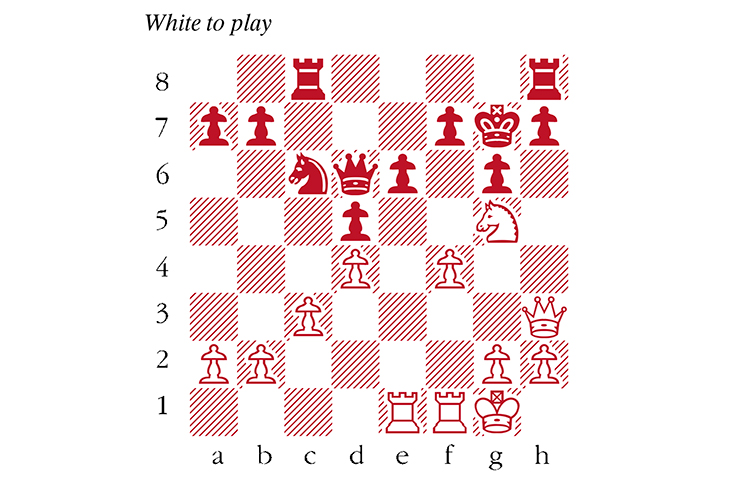

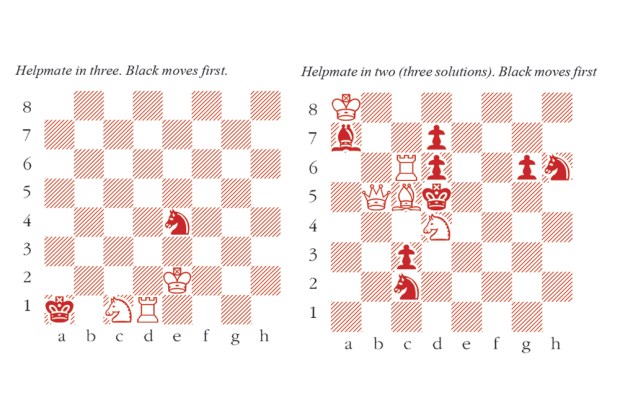
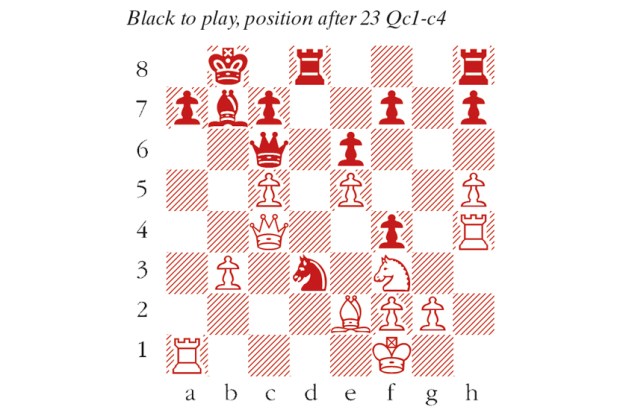
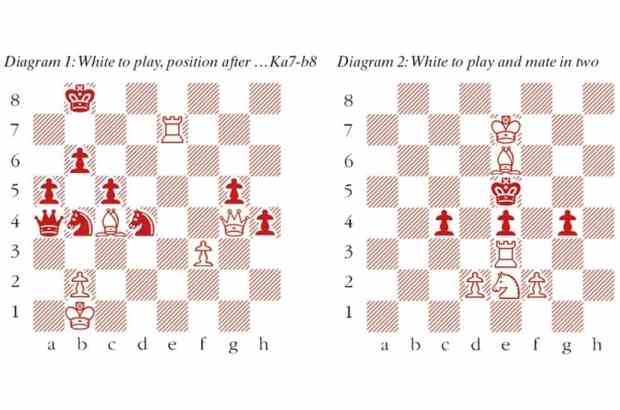
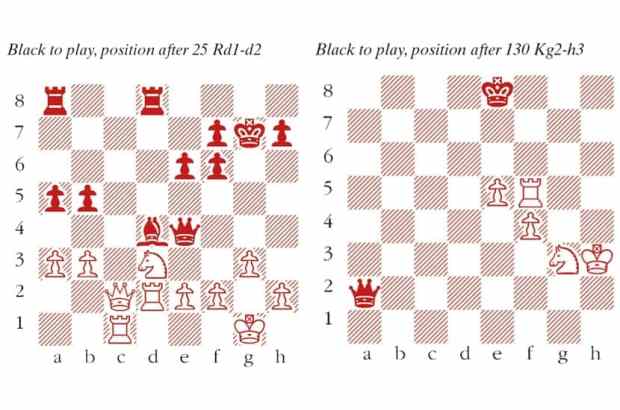
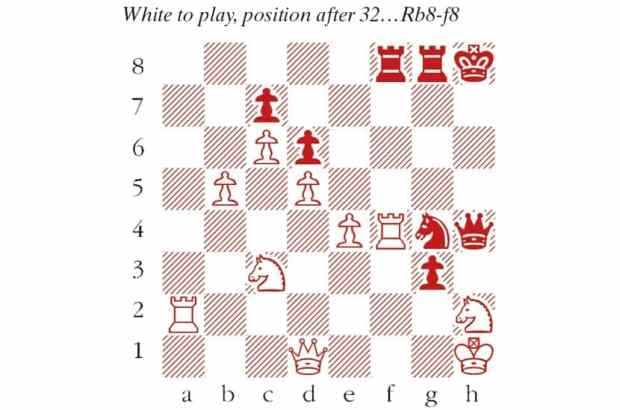






Comments
Don't miss out
Join the conversation with other Spectator Australia readers. Subscribe to leave a comment.
SUBSCRIBEAlready a subscriber? Log in